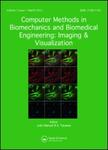版权所有:内蒙古大学图书馆 技术提供:维普资讯• 智图
内蒙古自治区呼和浩特市赛罕区大学西街235号 邮编: 010021

作者机构:Polytech Inst Lisbon Dept Radiat & Hlth Biosignals Av D Joao IILote 4-69-01 P-1990098 Lisbon Portugal Beatriz Angelo Hosp Imaging Ctr Lisbon Portugal Sch Hlth Technol Radiol Lisbon Portugal Univ Nova Lisboa Med Sci Fac Dept Anat Lisbon Portugal CRT Diagnost Imaging Ctr Tomar Portugal
出 版 物:《COMPUTER METHODS IN BIOMECHANICS AND BIOMEDICAL ENGINEERING-IMAGING AND VISUALIZATION》 (生物力学和生物医学工程计算方法:成像和可视化方法)
年 卷 期:2015年第3卷第2期
页 面:91-100页
核心收录:
学科分类:0831[工学-生物医学工程(可授工学、理学、医学学位)] 081203[工学-计算机应用技术] 08[工学] 09[农学] 0835[工学-软件工程] 0901[农学-作物学] 0836[工学-生物工程] 090102[农学-作物遗传育种] 0812[工学-计算机科学与技术(可授工学、理学学位)]
主 题:medical clinics computational bio-imaging and visualisation data processing and analysis medical imaging and visualisation
摘 要:Coronary artery disease (CAD) is currently one of the most prevalent diseases in the world population and calcium deposits in coronary arteries are one direct risk factor. These can be assessed by the calcium score (CS) application, available via a computed tomography (CT) scan, which gives an accurate indication of the development of the disease. However, the ionising radiation applied to patients is high. This study aimed to optimise the protocol acquisition in order to reduce the radiation dose and explain the flow of procedures to quantify CAD. The main differences in the clinical results, when automated or semiautomated post-processing is used, will be shown, and the epidemiology, imaging, risk factors and prognosis of the disease described. The software steps and the values that allow the risk of developing CAD to be predicted will be presented. A64-row multidetector CT scan with dual source and two phantoms (pig hearts) were used to demonstrate the advantages and disadvantages of the Agatston method. The tube energy was balanced. Two measurements were obtained in each of the three experimental protocols (64, 128, 256 mAs). Considerable changes appeared between the values of CS relating to the protocol variation. The predefined standard protocol provided the lowest dose of radiation (0.43 mGy). This study found that the variation in the radiation dose between protocols, taking into consideration the dose control systems attached to the CT equipment and image quality, was not sufficient to justify changing the default protocol provided by the manufacturer.